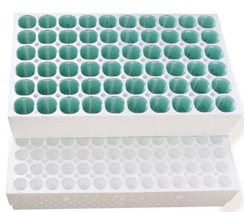
Lettuce rafts (Deep Water Culture) are perhaps the simplest most economical way to grow small herbs and plants in an aquarium or water container that is at least one foot deep. Essentially small plants such as herbs, spinach, basil, cilantro are placed in the lettuce raft and placed on top of the water source. You can grow your seedlings in a growing medium. One example would be the Hydroton balls. They are placed around the seedling to help support them in the lettuce raft. The water source is nutrient filled to feed the floating plants. Some examples of nutrients is, GH Flora Series. It consists of Flora Grow, Flora Micro and Flora Bloom. It's important that the roots of the plants are long enough to reach the water right after you plant them in your lettuce raft. You will also want to keep the pH of the water in the proper range which is 5.5 to 6.5. Of course, 6.0 if ideal! The reason the pH is so important is because the plants cannot assimilate the nutrients well if the pH is off.
The water must be aeriated so that the nutrients and the water itself do not become stagnant. One option for an aeriator is called an Air Stone. This stone is hooked up to a small single-outlet air pump which is outside the reservoir. Some people like to place the air pump higher than the reservoir so that the nutrients don't back up into it.
If you are excited to see plants grow right away, consider choosing plants that have a short growing cycle. Lettuce and other leafy greens are great for a start. For your kitchen you may want to have herbs at your fingertips! Just place your lettuce raft system in a sunny window. Some types of plants may require an additional light source such as a T5 compact fluorescent grow light. Other fun plants to consider growing are hot peppers, endives, watercress, basil and dill. What you don't want to grow are heavy bulky plants such as tomatoes, cucumbers, or sweet peppers.
A little hint for success is to cover any glass aquarium sides with thick paper or cardboard. This will block out the light and help prevent algae. When you want to show off the roots to your visitors, simply remove the paper for all to see.
Most of all have fun and happy growing!





